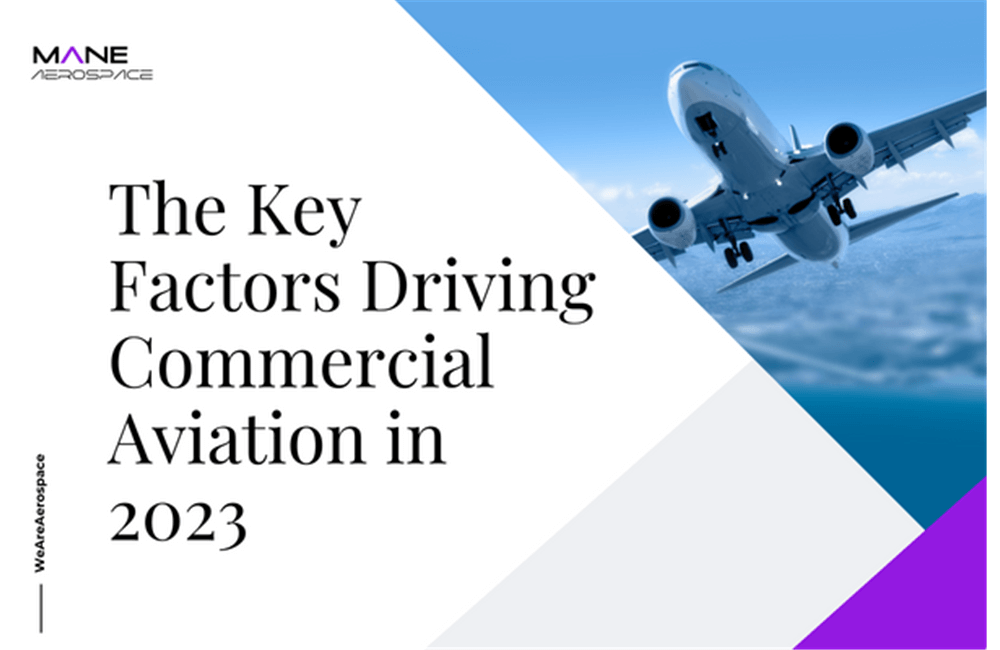The Key Factors Driving Commercial Aviation in 2023
11 Apr, 202310 minsSince 2019, the aviation industry has seen a lot of challenges and hurdles, but things are f...

Since 2019, the aviation industry has seen a lot of challenges and hurdles, but things are finally starting to look more optimistic.
The International Air Transport Association (IATA) expects the industry to profit in 2023, for the first time since the pandemic began. It’s predicting a profit of $4.7 billion for airlines in 2023, which is a small net profit compared to previous years. Experts also believe that deliveries of large aircrafts will increase by 20%, compared to what we saw in 2022. These profit margins are small, but the growth is an essential part of getting the aviation industry back to where it was before COVID-19 led to a lot of things being shut down.
There are a few things that are predicted to drive the aviation industry towards success this year, some of which we have detailed below.
- Aerospace Organisations Will Widen Their Range of Suppliers - The aviation and aerospace sectors need to solve the problem of unstable supply chains, which is likely to lead to one third of aerospace organisations diversifying their base of suppliers. To avoid the concentration risk of going from global sourcing to a more regional approach, diversification is key. This means raw materials will need to be sourced locally via nearshoring. Additive manufacturing (AM) is likely to be a big part of this shift, with figures showing that it could bring about cost reductions and lead time reductions of between 60% and 90%.
- Advanced Air Mobility (AAM) Will Reach Commercial Aviation - 2023 is the year in which AAM is expected to impact commercial aviation, with nearly a quarter of the top AAM startups making the move from prototype to Entry Into Service (EIS) by next year. A lot of the AAM industry has yet to move beyond the startup stage, but this won’t be the case for long. The FAA has already put forward how Joby Aviation Model JAS4-1 eVTOL air taxi aircraft will be certified, highlighting how eVTOL could work in practice. As the commercial aviation industry moves forward, more manufacturers are likely to work with these new air assets. However, this will require Advanced Air Vehicle companies to move from prototyping to production.
- Progress to Be Made in Sustainability Efforts - Sustainable Aviation Fuel (SAF) is already being produced, but 2023 is the year in which this is likely to really make a mark. It’s expected that production will reach one billion litres this year, which will drive forward sustainability progress in a big way. By 2050, IATA estimates that SAF will account for 65% of mitigation needed for net-zero CO2 emissions in the industry. This is a big step forward for the commercial aviation industry.
- The Commercial Space Market Will Be Driven by Space Travel - In 2023, it’s expected that space travel will boost the commercial space market, possibly by over 30%. This is due to a new ‘space race’ led by NASA and SpaceX, both of which are focusing their attention on commercial space travel. There has been a lot of talk about ‘space tourism’ and the impact this is going to have on commercial aviation, and it’s now though that it could help the industry to achieve a Compound Annual Growth Rate (CAGR) of 36.4% between 2022 and 2028. So far, 450,000 commercial flights have successfully used SAF in one way or another.
It’s safe to say that big things are expected in the commercial aviation industry in 2023, and this will continue on in subsequent years. As the industry leans towards SAF, AAM and diversified suppliers, profits are expected to grow.


